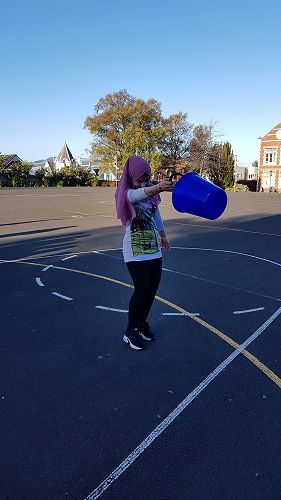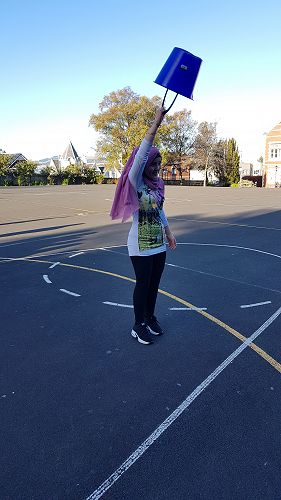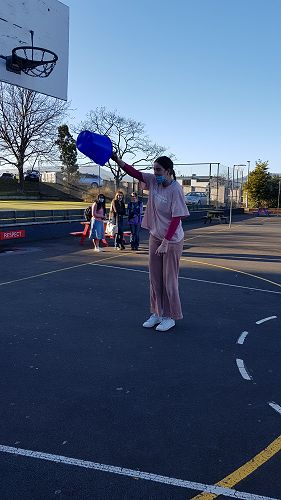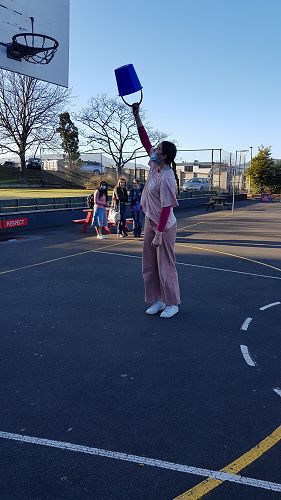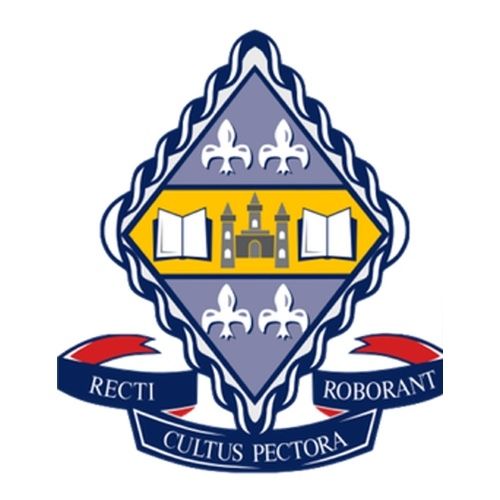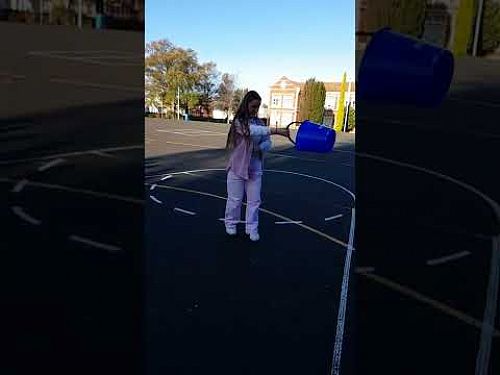
Year 13 Physics experiments
The Year 13 Physics class completed some experiments on vertical circles to show the need for a centripetal force (a force towards the centre) in order to move around in circles. Since our weight contributes to providing this centripetal force at the top of the swing, it helps turn the bucket and the water inside, so it does not get the chance to pull the water down out of the bucket to make us wet. That concept works well so long as the bucket is swung fast enough. There is a minimum speed under which the weight does not need to contribute much towards the centripetal force and the leftover will get you wet.
Year 13 students were challenged to swing the bucket and go as slow as they could without getting drenched: Abby Harris, Abbey Mason and Christine Hu were particularly daring.
Year 13 Physics students also look into what it would feel like to be orbiting the Earth on the International Space Station. Astronauts on the ISS are in free-fall towards planet Earth and so is the ISS. In our experiment, the water represents the astronauts and the bottle the ISS. Since they are falling together at the same rate towards Earth, the water remains in the bottle but isn't pushing against its sides. This means the water does not feel any push back from the bottle and therefore feels weightless. The same reasoning applies to the astronauts on the ISS who also feel weightless, despite having a non-negligible pull towards the Earth (only around 10% less than the pull we experience). (Note that the astronauts and the ISS don't end up crashing onto the surface of the Earth because they are moving forward as they fall down and thus end up moving in circles around the planet instead).
Gallery


